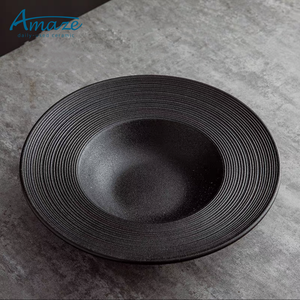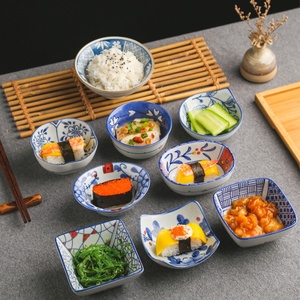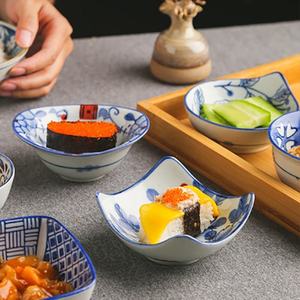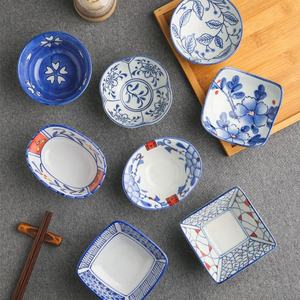(413 products available)
































































































































































































































Thai dishes are flavored with spices and herbs that give them a taste of exotic. Some basic ingredients used to prepare these foods are fish sauce, lime, chili, garlic, and ginger. Rice is a staple food in Thailand, and they eat it daily. It is served plain, cooked in coconut milk, or made into fried rice with vegetables and meat. Noodles are another staple, and there are different kinds of noodle soups. Some popular Thai noodle dishes include pad thai, a stir-fried noodle dish with eggs, tofu, and shrimp or chicken; kuay teow rad na, flat rice noodle dish with gravy sauce; and ba mee, egg noodle dish with roasted pork. Thai salads are also popular. Thai dishes typically use fresh vegetables, meat, or seafood and are dressed with lime juice and fish sauce. Some well-known Thai salads are som tum, papaya salad, and larb, minced meat salad. Fresh spring rolls are popular appetizers, too. They are made from rice paper wrapped around vegetables, herbs, and sometimes shrimp or meat.
Curry
Green curry is made from green chilies, while red curry paste contains red chillies. Massaman curry has spices like cumin and coriander, and panang curry has ground peanuts. Yellow curry powder is used in dishes such as curry fried rice and curry puffs.
Soups and Stews
Tom yum goong is a spicy shrimp soup, while tom kha gai is a coconut milk-based chicken soup. Gaeng daeng is red curry, and gaeng keow wan is green curry.
Thai dish
Pad means to fry, and ""Thai"" refers to something being done in the Thai way. Fried rice is a staple dish made with rice, vegetables, and meat or seafood.
Salads
These are made from fresh vegetables and meat or seafood and are dressed with lime juice and fish sauce. One popular salad is made from minced meat and roasted rice powder.
Dips and Spreads
Nam phrik is a chili dip made from crushed chili peppers. This dip can be enjoyed with fresh vegetables or as a spread on bread.
Snacks and Street Food
Thai snacks are delicious and can be enjoyed by anyone. One popular snack is made from banana slices dipped in batter and deep-fried until golden brown.
Drinks
Thai beverages are refreshing and complement the country's hot weather. One popular drink is made by brewing black tea and adding sweetened condensed milk and evaporated milk.
The design of Thai food focuses on making meals visually appealing. This is done through bright colors, artistic presentation, and a balance of different tastes. Thai cuisine is famous worldwide for its bold flavors and fresh ingredients. It often combines sweet, sour, salty, and spicy tastes in one dish. Thai cooking uses many herbs and spices, such as basil, cilantro, chili peppers, ginger, and garlic. These add flavor and make the food healthy.
Thai food is designed to be enjoyed with all five senses. The bright colors, fresh smells, and contrasting textures make it a pleasure to eat. Thai dishes are often served family-style, where everyone can take what they want. This encourages sharing and makes meals more social.
Thai dishes and cuisine have many applications and uses, making them a flexible dish popular worldwide. These are some critical use cases:
Daily meals:
Thai dishes like Pad Thai noodles, green curry, and Tom Yum soup can be enjoyed during lunch or dinner. They form the core of the daily culinary routine and are the foundation of the country's rich culinary tradition.
Special occasions and celebrations:
Festivals, weddings, and other important events often feature elaborate versions of Thai dishes. A royal Thai curry or an intricate dessert might be served to honor guests and highlight the occasion's importance.
Street food snacks:
Street vendors offer quick, affordable, and delicious food for people on the move or wanting a snack. Dishes like spring rolls, satay skewers, and mango sticky rice can be eaten as snacks or light meals.
Tours and cooking classes:
Many tourists come to Thailand to taste the local food and learn how to cook it. Cooking classes teach how to make famous dishes like papaya salad or coconut soup using fresh ingredients and traditional methods.
Health and wellness:
Due to their fresh ingredients and balanced flavors, Thai dishes are also popular in health and wellness programs, yoga retreats, or fitness centers. Green salads and fruit-based desserts are examples of dishes that support healthy eating.
Fusion cuisine:
Thai flavors are combined with elements from other cuisines to create fusion dishes. Thai tacos or curry pizza blend traditional Thai tastes with new cooking styles for unique dining experiences.
Takeout and delivery:
With the rise of food delivery services, many people prefer to enjoy Thai cuisine at home through takeout or delivery. Restaurants offer packaged versions of their dishes, making it convenient to savor Pad Thai or green curry without cooking.
Vegan and vegetarian options:
Thai cuisine provides various vegan and vegetarian options, catering to those who don't consume meat. Dishes like vegetable stir-fries, tofu curries, and bean sprout salads are widely available, making it easy for non-meat eaters to enjoy wholesome meals.
When choosing a Thai dish, multiple factors should be considered to ensure a satisfying and delicious experience. These factors include personal taste preferences, dietary restrictions, and the desired dining experience. One of the first things to consider is one’s own taste preferences. For those who enjoy bold flavors, dishes like Pad Thai or Tom Yum soup might be appealing as they are known for their rich and intense tastes. On the other hand, if one prefers milder dishes, it would be advisable to opt for something like Massaman curry which tends to be less spicy.
Moreover, it is essential to take into consideration any dietary restrictions that one may have. Thai cuisine offers various vegetarian and gluten-free options, so being aware of what can or cannot be consumed is crucial in finding something suitable for one’s needs. For instance, vegetarians could go for Green Curry with Tofu while gluten-intolerant individuals can enjoy Pineapple Fried Rice.
The next step in choosing a Thai dish is considering the desired dining experience. Thai food can be enjoyed in different ways, from street food stalls to fine dining restaurants, so it is important to think about what kind of atmosphere one wants when eating. If someone is looking for a quick bite on the go, they might want to choose something like Som Tum (Papaya Salad) or Moo Pad Krapow (Basil Pork Stir-Fry) which are commonly found in street food stalls. However, if one prefers a sit-down meal with multiple courses, then going to a restaurant serving traditional Royal Thai Cuisine would be more suitable.
Q1: What does a Thai dish taste like?
A1: Thai cuisine tastes sweet, sour, spicy, and bitter.
Q2: What are the main components of a Thai dish?
A2: The key elements are rice or noodles, proteins, veggies, and sauces.
Q3: Is Thai food usually spicy?
A3: Yes, but the spiciness can differ based on one dish or another.
Q4: What is the standard dessert in a Thai meal?
A4: Mango sticky rice is a popular dessert in Thai cuisine.
Q5: What are the usual ingredients in Thai curries?
A5: Coconut milk, curry paste, and vegetables are usually found in Thai curries.
Q6: What are some common Thai herbs and spices?
A6: Lemongrass, basil, coriander, and galangal are frequently used in Thai cooking.
Q7: What is the standard dip in Thai salads?
A7: Fish sauce, lime juice, and chili make the dressing for Thai salads.
Q8: What makes Pad Thai unique?
A8: Stir-fried noodles with tofu, shrimp, peanuts, and bean sprouts are included in it.
Q9: What is the role of street food in Thai cuisine?
A9: Street food is an essential part of Thai culture and cuisine.
Q10: Are there any vegetarian options in Thai food?
A10: Yes, many vegetarian and vegan dishes are available.